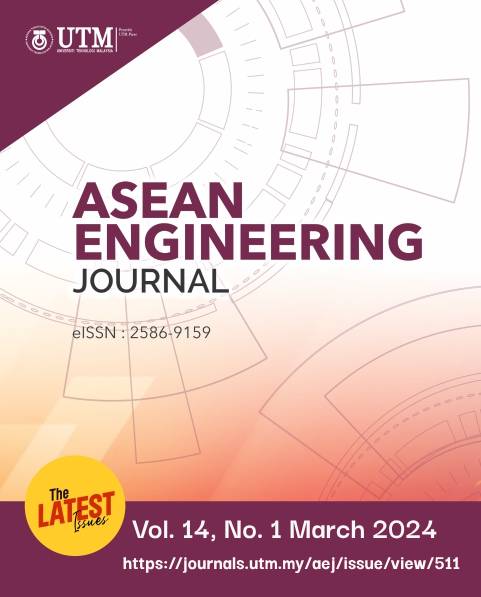SOCIO-ECONOMIC DEVELOPMENT INDICES AND THEIR REFLECTION ON INTERNET PERFORMANCE IN ASEAN COUNTRIES
DOI:
https://doi.org/10.11113/aej.v14.18666Keywords:
Development Index, Internet Performance, Internet Socio-economic Model, PingER, ASEANAbstract
Despite Internet use rapidly accelerating in ASEAN countries, its penetration rate across member countries varies from 84.45% of the population in Singapore to roughly 21.87% in Laos. This digital divide portends profound consequences on the social-economic development of the region. Therefore, this article describes an Internet performance study conducted within ASEAN countries using actual Internet performance data collected from 2000 to 2019 generated by the PingER Project. The results showed that the pattern of Internet performance (IP) is that the most developed countries have the best Internet performance, whereas the least developed ones have the lowest Internet performance. These Internet performance data were then compared and analyzed against several selected social-economic development indices in order to observe any trends and establish observable relationships. Initial inspection indicated a possible relationship between Internet performance and the indices, which was then statistically tested further by correlation and regression. Next, the relationship was then represented by a regression model, which was then validated through R2 and graphical residual analysis. As a result, this study has proposed a novel model that provides an insight into the influence of social-economic development indices on Internet performance in ASEAN countries.
References
Internet Society. 2015. Unleashing the Potential of the Internet for ASEAN Economies. The Internet Society (ISOC) and TRPC Pte Ltd.
Gurría, A. 2015. Towards Inclusive and Sustainable Growth in the ASEAN Economic Community. Davos World Economic Forum, Switzerland.
Wang, T.-Y. and Chien, S.-C. 2007. The Influences of Technology Development on Economic Performance: The Example of ASEAN Countries. Technovation. 27(8): 471–488.
Srinuan, C., Rohman, I.K., Srinuan, P. and Bohlin, E. 2010. Digital Divide in ASEAN Countries: Explaining the Gap. Competitiveness of the ASEAN Countries: Corporate and Regulatory Drivers. London: Edward Elgar. 153–172.
Ourworldindata.org. 2017. How Many Internet Users Does Each Country Have? Available:http://www.internetlivestats.com/internet-users-by-country/
Badran, M. F. and Badran, H. F. 2011. Promoting Economic Growth by Broadband Development in Emerging Countries: An Empirical Study. 2011 Technical Symposium at ITU Telecom World (ITU WT), Geneva. 199-204.
Les Cottrell, R. PingER - Internet End-to-End Performance Monitoring - SLAC Confluence.
https://confluence.slac.stanford.edu/display/IEPM/PingER.
Whittaker, Z. Syria suffers Internet ‘blackout’; cut off from the outside world. http://www.zdnet.com/article/syria-suffers-internet-blackout-cut-off-from-the-outside-world/
Abdullah, J., Lenando, H. and Jambli, M.N. 2013. Towards Achieving Intelligent Event Correlation for End-to-end Internet Performance Monitoring. 2013 IEEE Conference on Open Systems (ICOS), Kuching, 127-132.
ITU. 2015. Measuring the Information Society Report. International Telecommunication Union. 2015. Measuring the Information Society Report. ITU Publications
Undp.org. 2015. United Nations Development Programme: Human Development Reports. http:// www.hdr.undp.org/.
WorldBank. 2018. World Development Indicators| World DataBank,” The World Bank. http://databank.worldbank.org/data.
Barford, P. et al. 2002. A Comparison of Active and Passive Methods for Measuring Packet Loss. University of Wisconsin-Madison Technical Report.
Pezaros, D. 2005. Network Traffic Measurement for the Next Generation Internet., PhD, Lancaster University.
Mathis, M., Semke, J. and Mahdavi, J. 1997. The Macroscopic Behavior of the TCP Congestion Avoidance Algorithm. ACM SIGCOMM Computer Communication Review. 27(3): 67–82.
Jensen, M. 2003. Benchmarking Connectivity in Africa: Towards Effective Indicators for Measuring Progress in the Use of ICTS in Developing Countries. Joint NECE/ UNCTAD/ UNESCO/ ITU/ OECD/ Eurostat Statistical Workshop: Monitoring the Information Society: Data, Measurement and Methods, Geneva.
Zennaro, M. et al. 2006. Scientific Measure of Africa’s Connectivity. Information Technologies & International Development. 3(1): 55–64.
HPI. 2016. Happy Planet Index. http://happyplanetindex.org/.
Kmenta, J. 1986. Elements of Econometrics (2nd ed.). New York: MacMillan.
Wikipedia. 2018. F-test. https://en.wikipedia.org/wiki/F-test. 25/Oct/2021
















